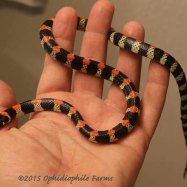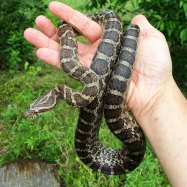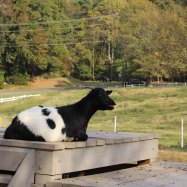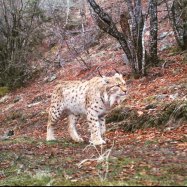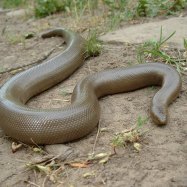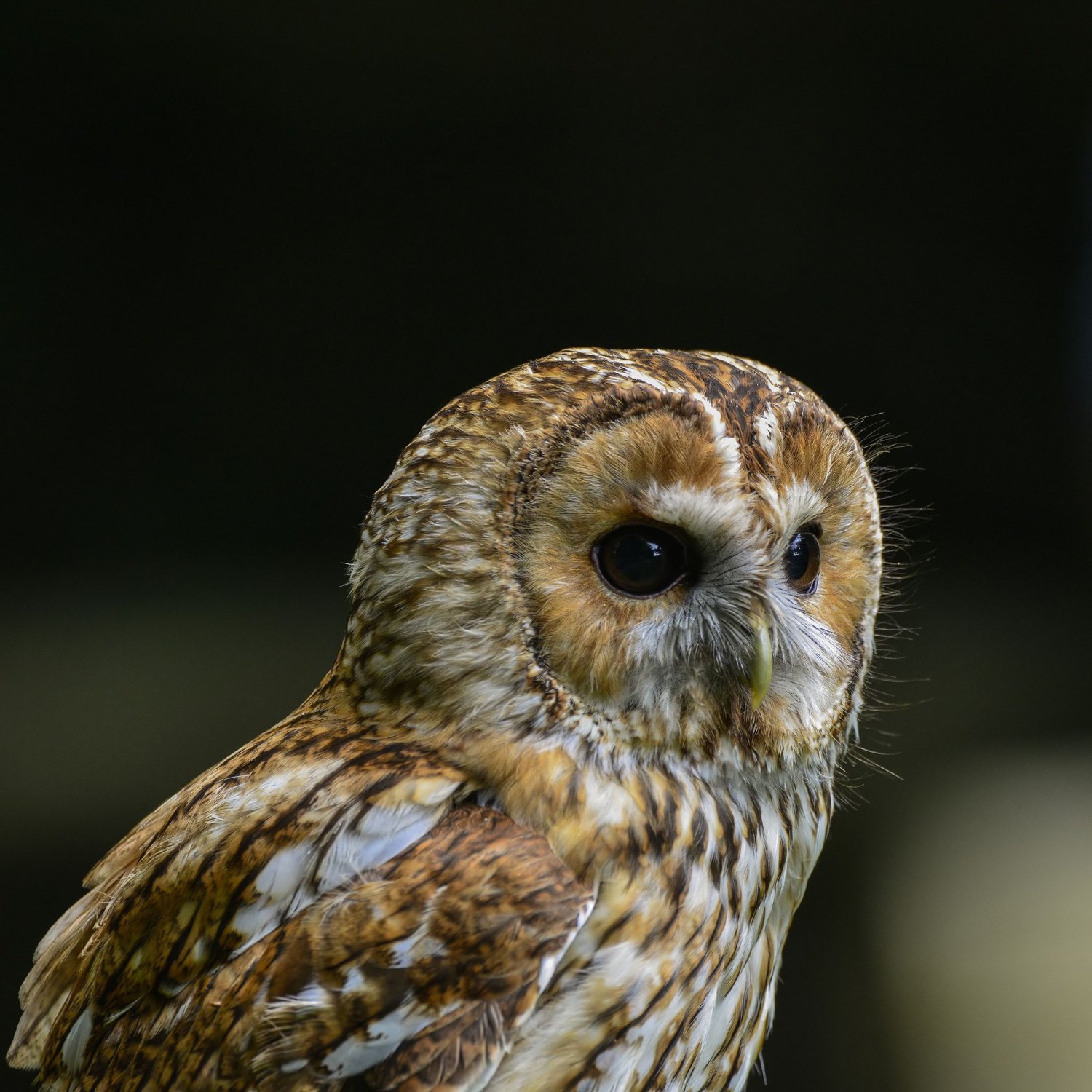
Tawny Owl
37-39 cm
The Tawny Owl, with its distinct brown and tawny feathers, is a medium-sized bird found in Europe and Asia. Belonging to the Strigidae family, these birds can grow up to 37-39 cm in length. Despite its name, it is not actually brown in color but has a mixture of grey, brown, and black feathers. These creatures are known for their keen eyesight and are active at night, making them sought after by birdwatchers and nature enthusiasts. Keep an eye out for this beautiful bird on your next forest hike!
Animal Details Summary:
Common Name: Tawny Owl
Kingdom: Animalia
Habitat: Forests, woodlands, parks, gardens
The Tawny Owl - Master of the Forests
The Tawny Owl, scientifically known as Strix aluco, is a common name given to one of the most fascinating creatures in the animal kingdom. This owl belongs to the Kingdom Animalia, Phylum Chordata, Class Aves, Order Strigiformes, and Family Strigidae. Being a carnivorous bird, it inhabits forests, woodlands, parks, and gardens and can be found in various locations across Europe and Asia. With its mottled brown and grey color, medium-sized body, and a length and height of 37-39 cm, the Tawny owl is a master of disguise and has mastered the art of hunting Tawny Owl.Appearance
The Tawny Owl is a medium-sized bird with a robust body, large head, and a wingspan of 94-104 cm. Its plumage is typically a combination of mottled brown and grey, with a distinct pale patch on the face and dark eyes. One of the most remarkable features of this owl is its facial disk, which is made up of stiff feathers that help direct sound to its ears, allowing it to locate prey even in the dark. This unique adaptation gives it the nickname "feathered radar" among bird enthusiasts.Habitat and Distribution
As its name suggests, the Tawny Owl primarily inhabits forests, woodlands, parks, and gardens, where it can find ample food, shelter, and nesting sites. While it is widespread in Europe and Asia, it is more commonly found in Europe, where it is widespread and abundant. Despite being adaptable and able to thrive in various habitats, it prefers open woodlands, where it can find a mix of both trees and open spaces.Feeding Behavior
The Tawny Owl is a carnivorous bird and a skilled hunter. Its diet primarily consists of small mammals, such as rodents, shrews, and even small rabbits Ten Lined June Beetle. It also preys on smaller birds, insects, and occasionally takes fish or amphibians. Unlike other predators, the Tawny Owl does not fly high in the sky, looking for prey. Instead, it uses its excellent eyesight and extremely sharp hearing to locate prey from a perch or while flying low to the ground. Once it spots its target, it swoops down with incredible speed and accuracy, using its powerful talons to catch and kill its prey.Behavior and Adaptations
The Tawny Owl has several adaptations that make it a successful hunter and enable it to survive in its habitat. As mentioned earlier, its feathered facial disks not only help with hearing but also aid in camouflaging. The coloration of its feathers, a mix of brown and grey, allows it to blend into tree bark, making it virtually invisible to its prey and predators. This skill of blending in is particularly useful during the day when it rests on tree branches, making it almost impossible to spot.Another remarkable behavior of the Tawny Owl is its ability to adapt to changing environments and food availability. During years of high rodent population, this owl will produce more young ones, ensuring its survival and increasing its population. On the other hand, during years when food is scarce, it may not reproduce at all, showing a remarkable ability to regulate its own population.
Threats and Conservation
While the Tawny Owl is widespread and abundant, it still faces several threats, mainly due to human activities. Deforestation, urbanization, and the use of pesticides, have all taken a toll on the Tawny Owl's habitat, resulting in a decline in its population. In some regions, it faces direct persecution from humans, who consider it a nuisance or a threat to game birds. These activities have led to the decline of the Tawny Owl in certain areas, although it is not currently considered an endangered species.To ensure the conservation of the Tawny Owl and its habitat, several measures have been put in place. Firstly, the European Birds Directive has protected the species, making it illegal to harm or kill them. In addition, the creation of designated areas, such as protected woodlands and parks, has helped protect and preserve their habitat. Furthermore, efforts to educate the public about the importance of these creatures and their role in the ecosystem have also led to a better understanding and appreciation for the Tawny Owl.
In Conclusion
In conclusion, the Tawny Owl is an incredible creature that has fascinated humans for centuries. With its distinct features, adaptable behavior, and extraordinary hunting skills, it is truly a master of the forests. While it faces several threats, measures are being taken to protect and preserve its population and habitat. As we continue to learn more about this incredible bird and its role in the ecosystem, let us also do our part in ensuring its survival for future generations to appreciate and admire.

Tawny Owl
Animal Details Tawny Owl - Scientific Name: Strix aluco
- Category: Animals T
- Scientific Name: Strix aluco
- Common Name: Tawny Owl
- Kingdom: Animalia
- Phylum: Chordata
- Class: Aves
- Order: Strigiformes
- Family: Strigidae
- Habitat: Forests, woodlands, parks, gardens
- Feeding Method: Carnivorous
- Geographical Distribution: Europe and Asia
- Country of Origin: Europe
- Location: Various locations in Europe and Asia
- Animal Coloration: Mottled brown and grey
- Body Shape: Medium-sized
- Length: 37-39 cm
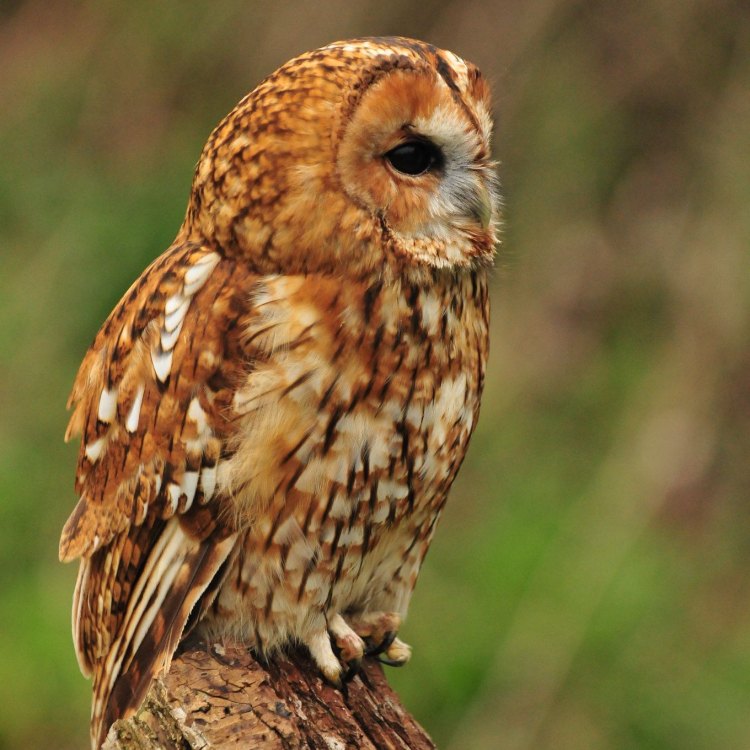
Tawny Owl
- Adult Size: Medium-sized
- Average Lifespan: 4-5 years
- Reproduction: Sexual
- Reproductive Behavior: Monogamous
- Sound or Call: Hoots and high-pitched screeches
- Migration Pattern: Non-migratory
- Social Groups: Solitary
- Behavior: Nocturnal
- Threats: Habitat loss, pollution, hunting
- Conservation Status: Least Concern
- Impact on Ecosystem: Controls population of small mammals
- Human Use: Symbol of wisdom in some cultures, popular bird for falconry
- Distinctive Features: Large head, rounded wings
- Interesting Facts: Tawny owls can rotate their heads up to 270 degrees
- Predator: Various predators including larger owls, eagles, and foxes
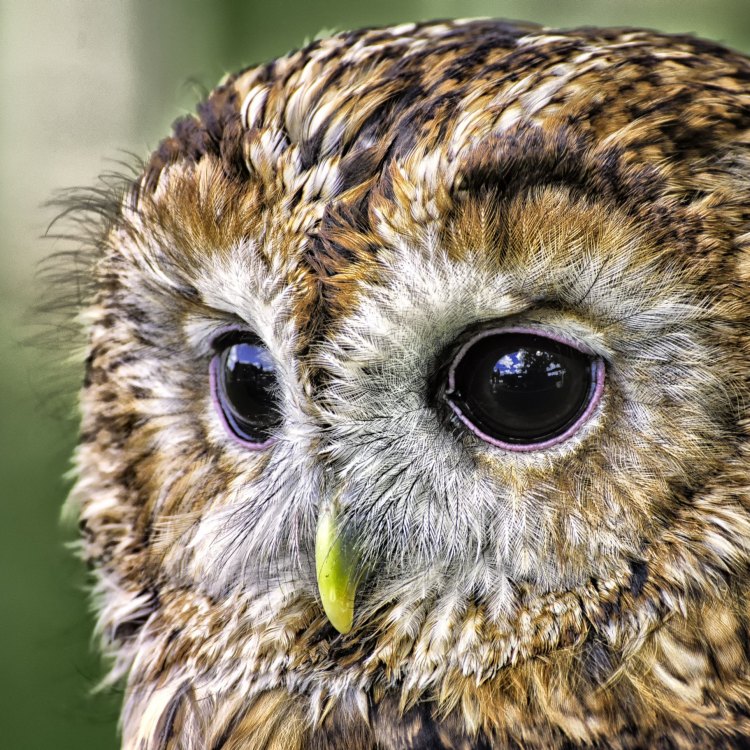
Strix aluco
The Majestic Tawny Owl: Wisdom in the Night Skies
The quiet rustling of leaves is suddenly interrupted by a deep hoot echoing through the darkness. The tawny owl, with its distinctive large head and rounded wings, swoops down from its perch, its sharp eyes scanning for its prey. It is a creature shrouded in mystery and superstition, a symbol of wisdom in some cultures and a popular subject in folklore and literature. But beyond its enigmatic aura, this medium-sized owl plays a crucial role in the ecosystem and has a fascinating life of its own PeaceOfAnimals.Com.Adult tawny owls can grow up to 40cm in length and have a wingspan of up to 95cm. They are considered medium-sized compared to other owl species, such as the Eurasian Eagle-Owl or the Snowy Owl. Their plumage is a mix of browns, grays, and white, providing them with excellent camouflage in their woodland habitat. However, it is their large head and rounded wings that make them stand out and easily recognizable.
These majestic creatures have an average lifespan of 4-5 years in the wild, but some have been known to live up to 20 years in captivity. Like most birds, tawny owls reach sexual maturity around one year of age and reproduce sexually. They are monogamous, meaning they mate with only one partner for life. Their breeding season starts in late winter, and they can produce up to 2-5 eggs, with an incubation period of about 30 days.
During this time, tawny owls become much more vocal, with their hooting and high-pitched screeches echoing through the night Tree Frog. This is their way of communicating with their mates, marking their territory, and warning off potential threats. Once the offspring hatch, both parents take part in caring for the young until they are ready to leave the nest, usually around 6-7 weeks old.
Despite their strong bond with their partners, tawny owls are solitary creatures most of the year. They only come together during the mating season and are known to be fiercely territorial, defending their territory from other owls.
These magnificent creatures are primarily nocturnal, meaning they hunt and are active at night. Their excellent hearing and vision, along with their large talons and sharp beaks, make them skilled predators. They mostly feed on small mammals, including mice, voles, shrews, and even small birds and insects. They are also known to occasionally snatch fish from rivers and streams.
As non-migratory birds, tawny owls do not travel far from their breeding grounds. They have a small home range, which they fiercely defend, and their young often stay close to their parents' territory. However, there have been cases of tawny owls venturing out of their range, likely in search of new breeding or hunting grounds.
While they may be solitary and elusive creatures, tawny owls play a vital role in their ecosystem. These birds are natural pest controllers, feeding on small mammals that can be considered pests to farmers, such as rodents and insects. This helps to keep the population of these creatures in check, maintaining a healthy balance in nature.
Unfortunately, like many wild animals, tawny owls face numerous threats in their natural habitat. Their biggest threat is habitat loss, as deforestation and urbanization continue to shrink their woodland homes. Pollution, such as pesticides and the use of rodenticides, also poses a significant danger to these birds, as they can accumulate in their food sources and poison them. In some areas, tawny owls are also hunted for their feathers and as a popular bird for falconry.
Despite these challenges, the International Union for Conservation of Nature (IUCN) lists the tawny owl as a species of Least Concern. This is because they have a relatively stable population and adapt well to human presence, sometimes even nesting in suburban gardens. However, continued efforts are needed to protect their habitat and mitigate other threats to ensure their survival in the long run.
One interesting feature of tawny owls is their ability to rotate their heads up to 270 degrees, allowing them to have a nearly complete range of vision. This is made possible by their flexible necks, which have twice as many vertebrae as human necks. This incredible adaptation allows them to observe their surroundings without having to move their whole bodies, making them excellent hunters.
Despite their impressive hunting skills, tawny owls also have various predators, including larger owl species, eagles, and even foxes. But their biggest threat is habitat loss, as it not only affects their numbers but also limits their food sources and nesting areas.
Aside from their crucial role in the ecosystem, tawny owls have also captured the imagination of humans. In some cultures, they are seen as symbols of wisdom and are believed to have magical powers. In ancient Greece, tawny owls were associated with the goddess Athena, the goddess of wisdom, and were seen as protectors of the city of Athens. In Native American folklore, tawny owls are seen as messengers between humans and spirits and are highly respected.
In modern times, tawny owls have also become a popular subject in literature and media. They are often portrayed as wise and mysterious creatures, appearing in stories and movies such as Harry Potter. These representations further fuel the fascination and intrigue surrounding these birds.
In conclusion, the tawny owl is a magnificent creature with its large head, rounded wings, and ability to rotate its head 270 degrees. These creatures, although elusive, play a crucial role in the ecosystem as natural pest controllers. They are monogamous and fiercely territorial, but their population is facing threats from habitat loss, pollution, and hunting. It is through understanding and protecting their habitat that we can ensure the survival of these wise creatures in the night skies.
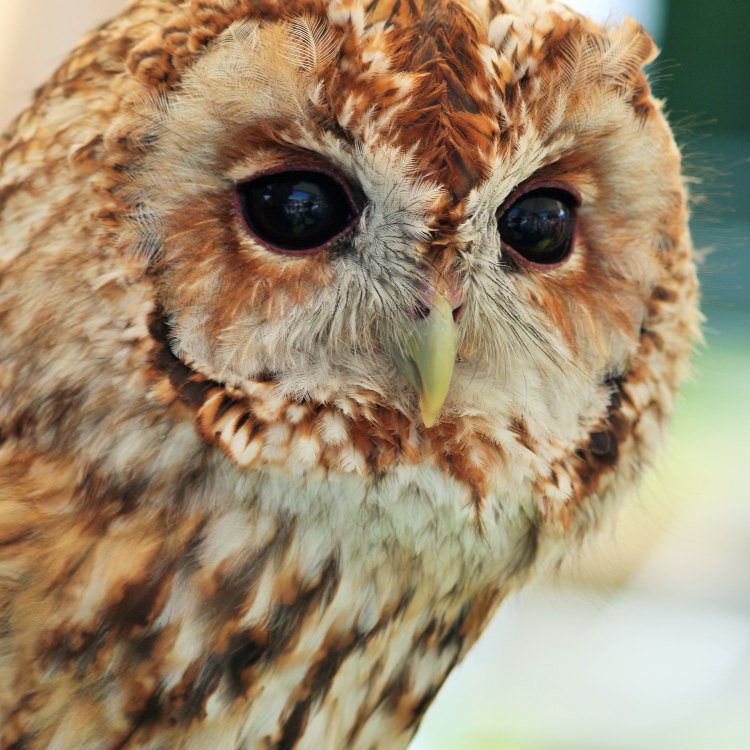
The Tawny Owl - Master of the Forests
Disclaimer: The content provided is for informational purposes only. We cannot guarantee the accuracy of the information on this page 100%. All information provided here may change without prior notice.



